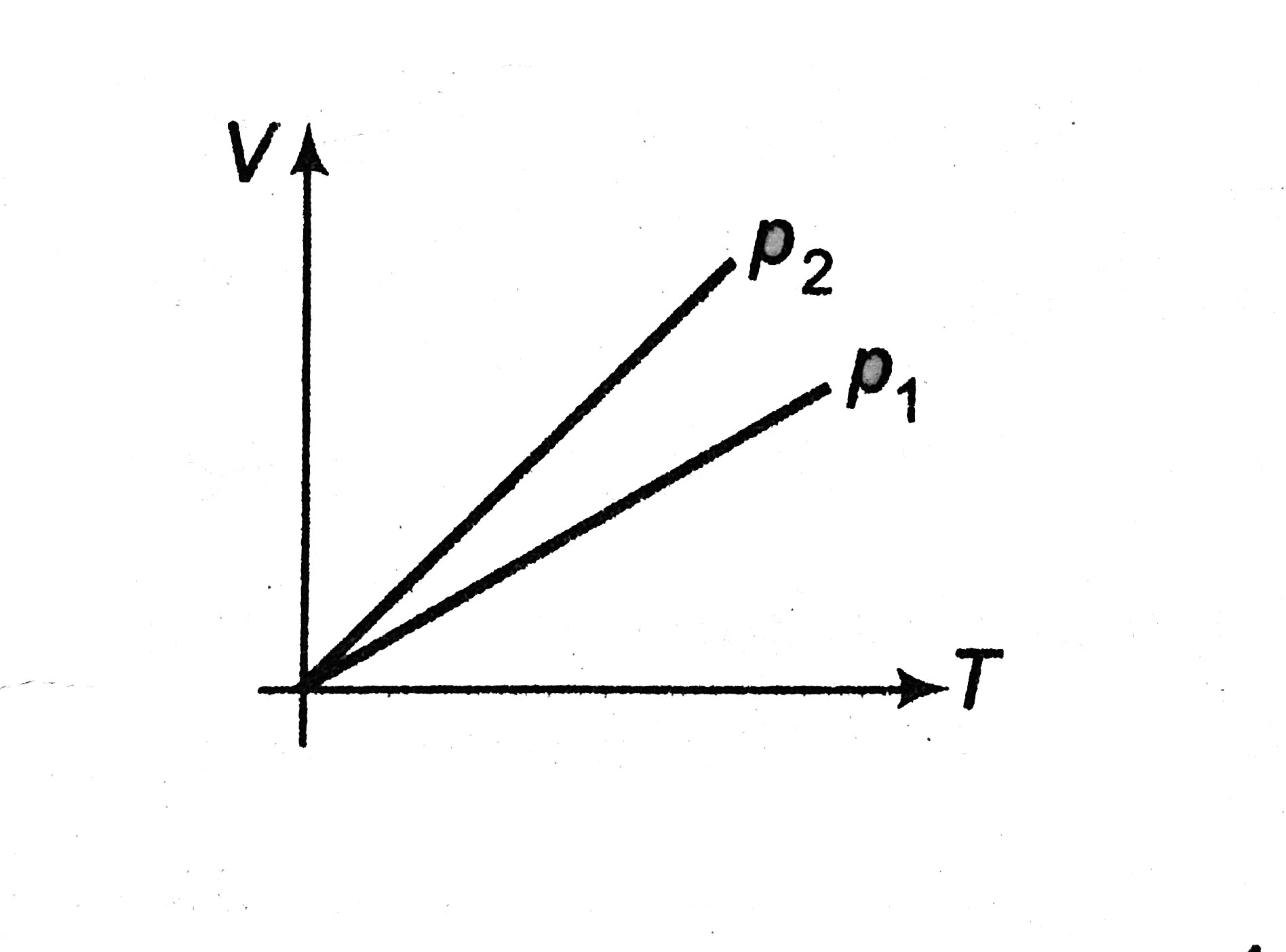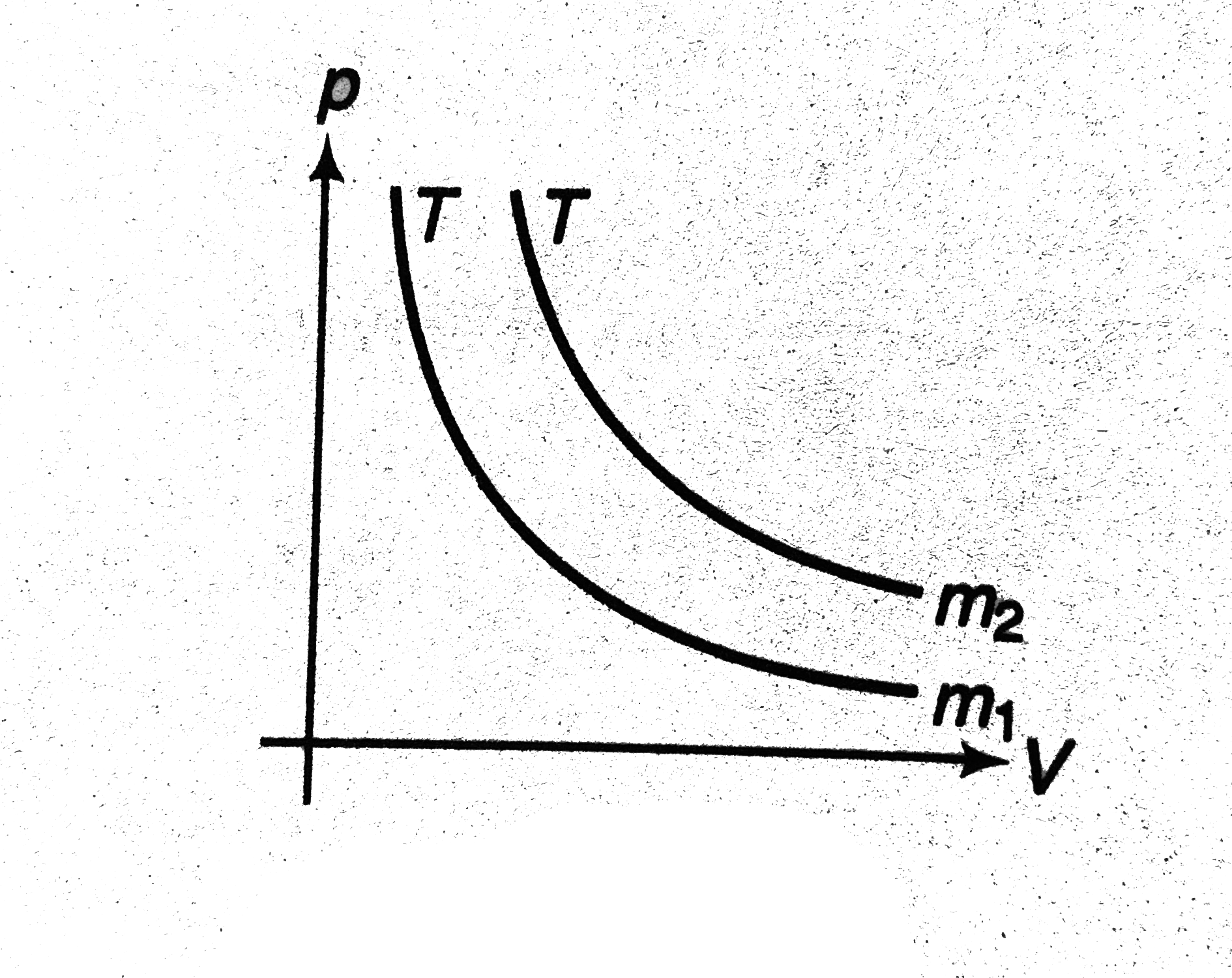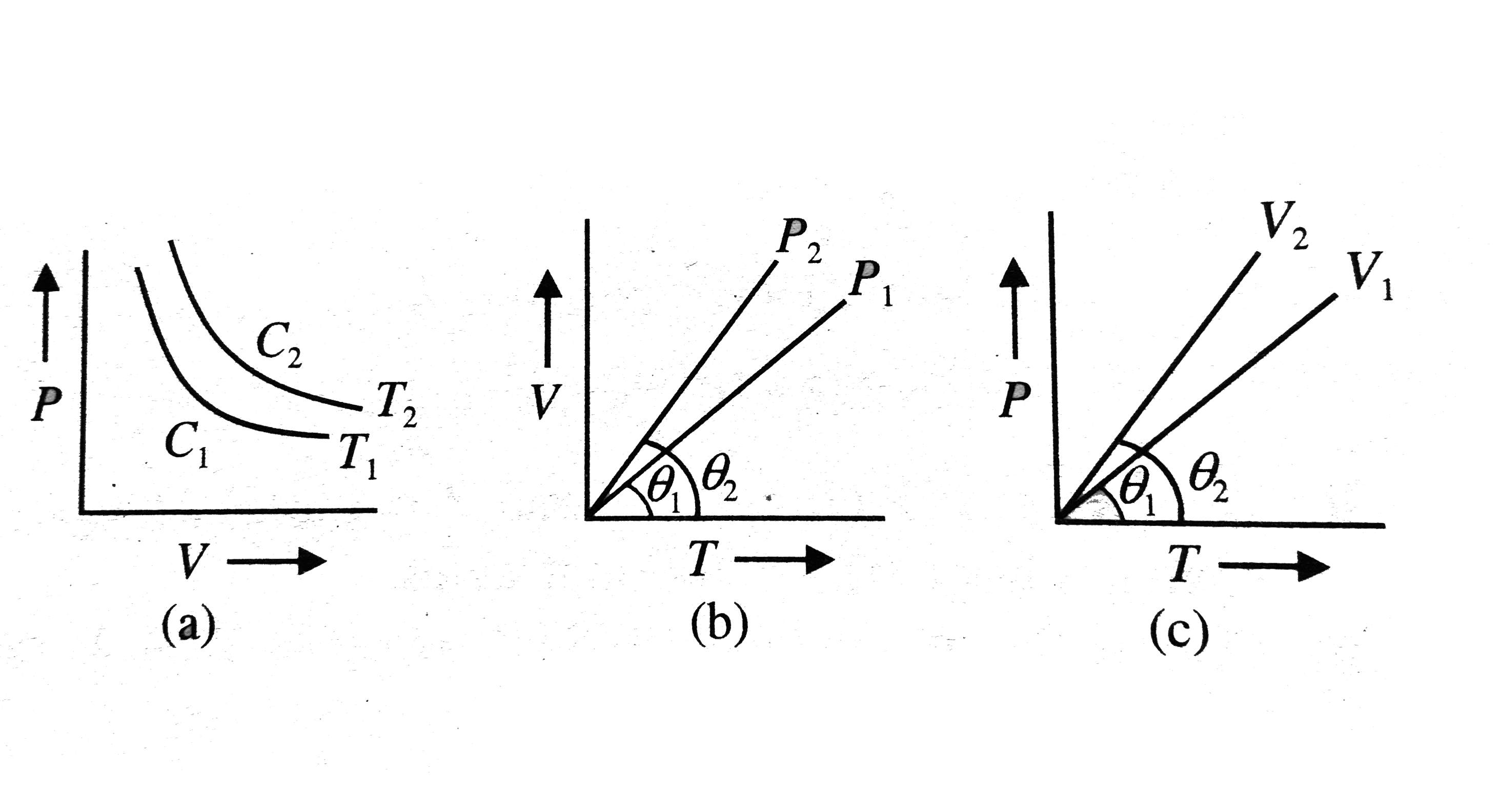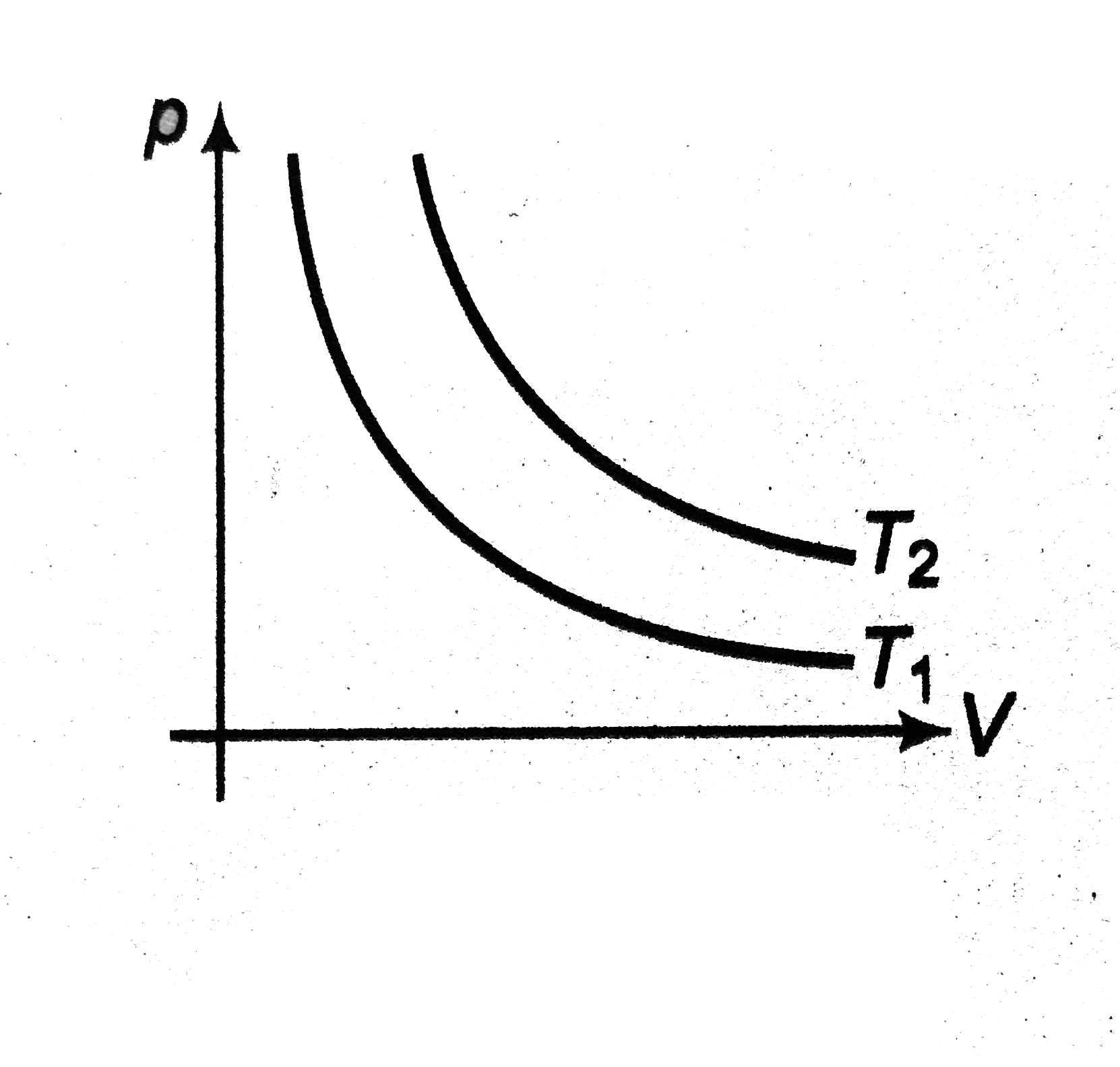State whether (p1>p2orp2>p1) for given mass of a gas ?
 .
.
The correct Answer is:A, B
V=nRTp=(nRp)T
For given mass, (V - T) graph is a straight line passing through origin having
slope = nRp∝1p
Slope of (p2) is more. Hence, (p2<p1).
Topper's Solved these Questions
- THERMOMETRY,THERMAL EXPANSION & KINETIC THEORY OF GASESBook:DC PANDEY ENGLISHChapter:THERMOMETRY,THERMAL EXPANSION & KINETIC THEORY OF GASESExercise:Exercise 20.4
Explore 3 Videos
- THERMOMETRY,THERMAL EXPANSION & KINETIC THEORY OF GASESBook:DC PANDEY ENGLISHChapter:THERMOMETRY,THERMAL EXPANSION & KINETIC THEORY OF GASESExercise:Exercise 20.5
Explore 7 Videos
- THERMOMETRY,THERMAL EXPANSION & KINETIC THEORY OF GASESBook:DC PANDEY ENGLISHChapter:THERMOMETRY,THERMAL EXPANSION & KINETIC THEORY OF GASESExercise:Exercise 20.2
Explore 7 Videos
- THERMOMETRY THERMAL EXPANSION AND KINETIC THEORY OF GASESBook:DC PANDEY ENGLISHChapter:THERMOMETRY THERMAL EXPANSION AND KINETIC THEORY OF GASESExercise:Medical entrance gallary
Explore 30 Videos
- UNIT AND DIMENSIONSBook:DC PANDEY ENGLISHChapter:UNIT AND DIMENSIONSExercise:Assertion And Reason
Explore 2 Videos
Similar Questions
The p−V diagram of two different masses m1 and m2 are drawn (as shown) at constant temperature (T). State whether m1>m2orm2>m2.
 .
.
View SolutionExplain whether (a) T2>T1, (b) P2>P1 and (c ) V2>V1 or otherwise in Fig., which represent in isothermal, isobaric, and isochoric processes for the same mass of an ideal gas, respectively.

View Solutionp−V diagram of same mass of a gas are drawn at two different temperatures (T1) and (T2). Explain whether T1>T2orT2>T1.
 .
.
View SolutionAlong the line - 1, mass of gas m1 and pressure is p1. Along the line - 2 mass of same gas is m2 and pressure is p2. Choose the correct options.
 .
.
View SolutionIf p=q+2 then p>q.
View SolutionExamine the following plots and predict whether in (i) P1<P2andT1>T2 , in (ii) T1=T2<T3, in (iii) V1>V2,in(iv)P1>P2orP2>P1
_E01_267_Q01.png)
View SolutionFigure shows volume - temperature (V-T) graph for same mass of an ideal gas at two different pressures P1and P2. Hence
View SolutionThe thrust developed by a rocket-motor is given by F=mv+A(P1−P2) where m is the mass of the gas ejected per unit time, v is velocity of the gas, A is area of cross-section of the nozzle, P1andP2 are the pressures of the exhaust gas and surrounding atmosphere. The formula is dimensionally
View SolutionThe volume V versus temperature T graphs for a certain amount of a perfect gas at two pressure p1andp2 are as shown in Fig. Show that p1 is less than p2.

View SolutionDefine Cp and CV. Why is CP>CV ? For an ideal gas, prove that CP−CV=R .
View Solution